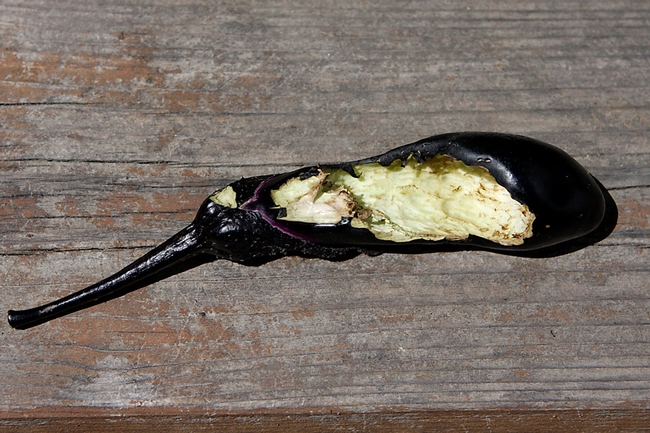- Author: Kathy Low
This could be another bad year for rattlesnakes. I saw a baby one slithering by the base of one of my planters the other day. And my neighbor told me she heard one while walking down her driveway last week.
I live in an agricultural area of the county. Through the years an occasional rattlesnake would slither through my garden only every couple of years. Last year was the exception, which was a notoriously bad year for rattlesnakes. And I have to admit that rattlesnakes terrify me to the point that last year I wouldn’t go out into my garden for weeks at a time each time I saw a rattlesnake.
Beside the rattle on their tail, you can also identify a rattlesnake from the common garden snake by the shape of its head. Rattlesnakes have a triangle shaped head. But if you see a snake slithering by, you may just want to let it move along its path rather than getting closer to try to identify it.
The UC IPM Pest Note for rattlesnakes recommends clearing away any heavy brush, tall weeds, grass, rocks, logs, lumber piles and any other places where snakes can hide. Since snakes do not burrow, cover up any rodent burrows so the snakes cannot use them. And of course, getting rid of any rodents will remove one of their food sources from the area making it less hospitable to them. A snake fence can also be used to exclude snakes from an area.
Rattlesnakes are not considered threatened or endangered, so you are allowed to kill them on your property. But from foolish experience, I can tell you it is both difficult, and dangerous to try to kill a rattlesnake with a shovel. If the rattlesnake doesn’t move on to another area, it’s wiser to call a professional to remove the snake rather than trying to deal with it yourself.
If bitten, seek immediate medical attention. I always keep my cell phone in my pocket when gardening just as a safety precaution. In case of a garden accident or snake bite, I’ll be able to summon help immediately. Whenever you’re home alone gardening, consider keeping your cell phone within reach.

- Author: Sharon Leos
When I was a kid, I had a pet rat. The offspring of “Rat Olympics” medal winning parents, she was friendly and athletic. A smart rat, I trained her to perform several tricks. She was a domesticated rat and my pet. The wild rats that have been using our vegetable garden as their cafeteria, are pests.

There are many public health issues associated with wild rodents and any pest problem is best dealt with early, before it gets out of control. The two most common rat species in California are the Norway rat (Rattus norvegicus) and the roof rat (R. rattus). Sanitation, rat proofing, and population control are the three main aspects of managing a rat problem.
The first sign of my rat problem was early in spring: vanishing bok choy (Brassica rapa chinensis). The outer leaves of the young leafy clusters were disappearing one by one over the course of a few nights. The amount of damage could not have been caused by insects and no evidence of slugs or snails was visible. Since they are active at night, I suspected rats. I constructed 24-inch tall cylinders of hardware cloth to protect the plants. After a few nights of experimenting with methods for securing the cylinders to the ground, the leaves remained undamaged. Hungry rats will find a way around obstacles, so I buried the hardware cloth about an inch deep and used garden staples to hold it in place. The bok choy was now rat proofed.

Things to consider when choosing a control method:
Rodent baits contain poisons that are also toxic to pets, wildlife, and humans. It may take several days for the poison to work allowing the rat (or mouse) the opportunity to find an inconvenient place to die like inside a wall or under a deck. The carcass may still contain active poison that could be harmful to cats, dogs, or wildlife that might consume it.
Glue or sticky traps are usually ineffective and rats can drag them around as they struggle to escape. Glue traps can be dangerous for wildlife such as birds and reptiles, and small mammals like kittens.
Trapping with a spring type trap is recommended by UC IPM as the most effective. It may be labor intensive, but it works. Over the summer, we controlled more than twenty rats in our garden. We religiously set the traps in the evening and unset any unused traps in the morning. Why not leave traps out all the time? Dogs, cats, and wild birds looking for food could be injured by the traps, and that is definitely not the intention.
For more information on managing rats, including trap setting strategies, visit the UC IPM website for Pest Note number 74106 http://www.ipm.ucdavis.edu/PMG/PESTNOTES/pn74106.html



